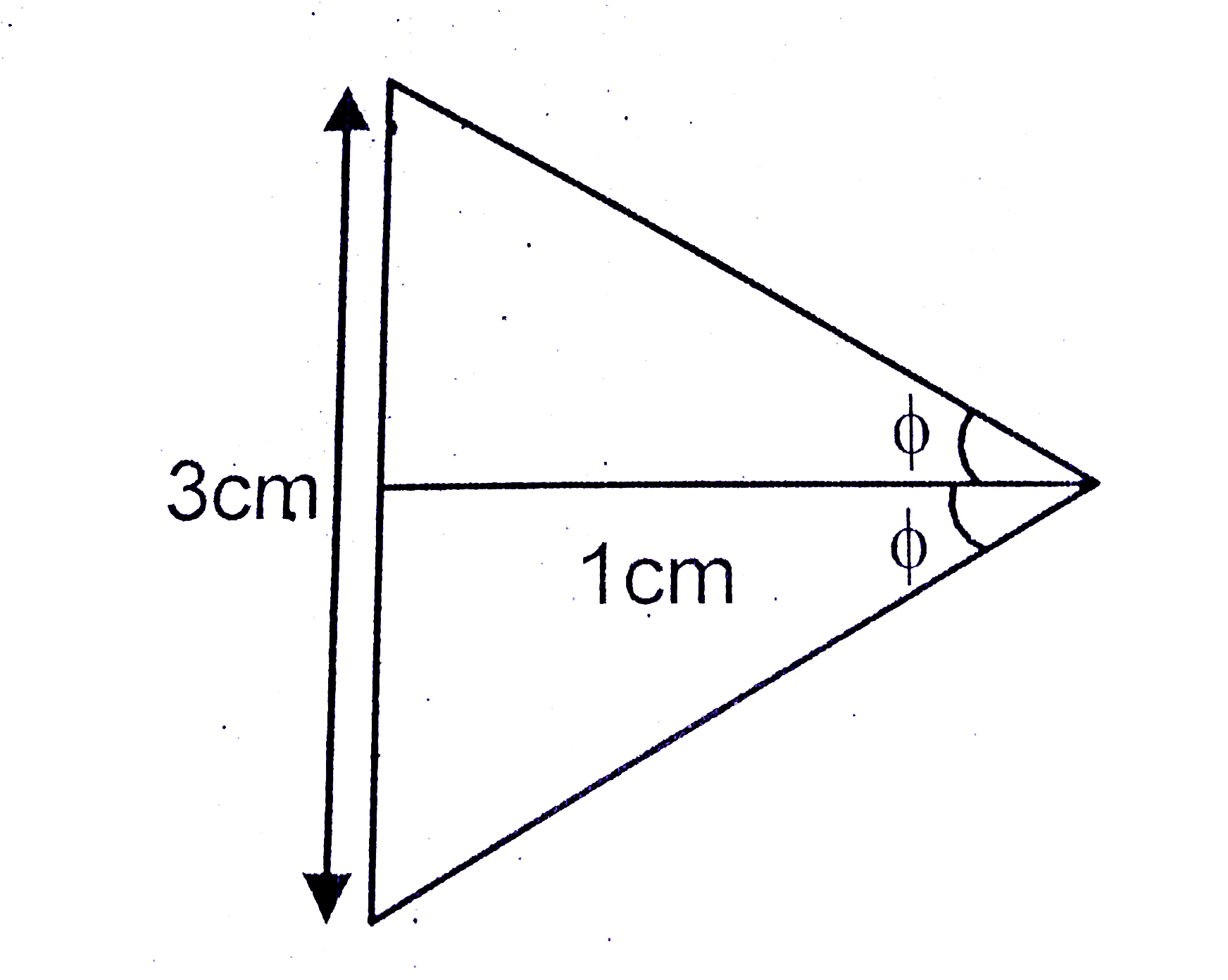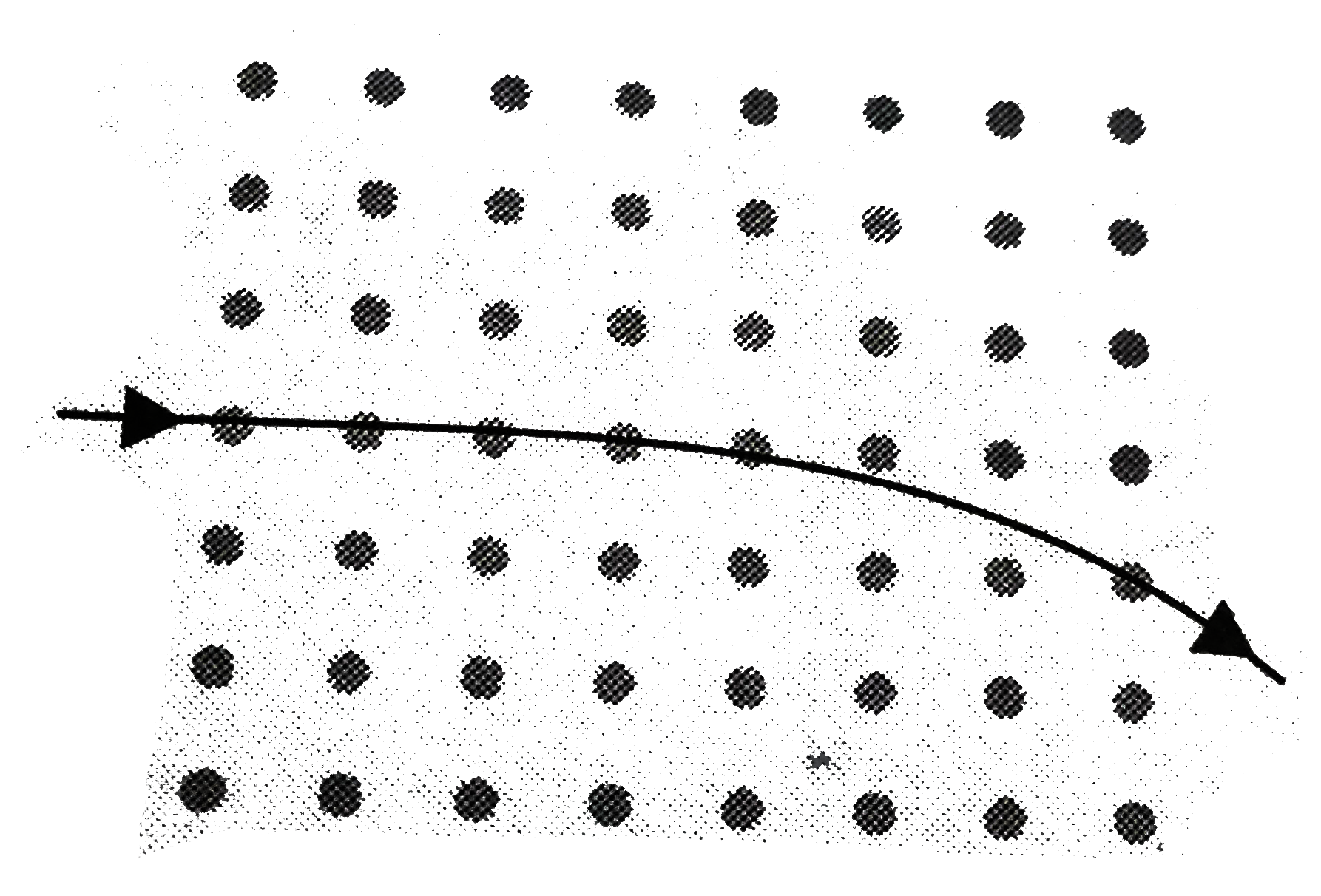Protons having kinetic energy K emerge from an accelerator as a narrow beam. The beam is bent by a perpendicular magnetic field so that it just misses a plane target kept at a distance I in front of the accelerator. Find the magnetic field.
To solve the problem, we need to find the magnetic field B that causes protons to bend in a way that they just miss a target placed at a distance l from the accelerator. Here is a step-by-step solution:
Step 1: Understand the Motion of Protons in a Magnetic Field
When protons enter a magnetic field perpendicularly, they experience a magnetic force that causes them to move in a circular path. The radius r of this circular path can be expressed in terms of the mass m, velocity v, charge q, and magnetic field B.
Step 2: Relate the Radius to the Distance l
Since the protons just miss the target at a distance l, we can equate the radius of the circular path to l:
r=l
Step 3: Use the Formula for Radius in a Magnetic Field
The radius r of the circular path for a charged particle in a magnetic field is given by:
r=mvqB
Substituting r=l into this equation gives:
l=mvqB
Step 4: Express Velocity in Terms of Kinetic Energy
The kinetic energy K of the protons is given by:
K=12mv2
From this, we can solve for v:
v=√2Km
Step 5: Substitute Velocity into the Radius Equation
Now, substitute the expression for v into the radius equation:
l=m√2KmqB
This simplifies to:
l=√2KmqB
Step 6: Solve for the Magnetic Field B
Rearranging the equation to solve for B:
B=√2Kmql
Final Answer
Thus, the magnetic field B is given by:
B=√2Kmql
When protons enter a magnetic field perpendicularly, they experience a magnetic force that causes them to move in a circular path. The radius r of this circular path can be expressed in terms of the mass m, velocity v, charge q, and magnetic field B.
Since the protons just miss the target at a distance l, we can equate the radius of the circular path to l:
r=l
The radius r of the circular path for a charged particle in a magnetic field is given by:
r=mvqB
Substituting r=l into this equation gives:
l=mvqB
The kinetic energy K of the protons is given by:
K=12mv2
From this, we can solve for v:
v=√2Km
Now, substitute the expression for v into the radius equation:
l=m√2KmqB
This simplifies to:
l=√2KmqB
Rearranging the equation to solve for B:
B=√2Kmql
Thus, the magnetic field B is given by:
B=√2Kmql
Topper's Solved these Questions
- BOOK - HC VERMA ENGLISHCHAPTER - MAGNETIC FIELDEXERCISE - QUESTIONS FOR SHORT ASNWER10videos
MAGNETIC FIELD
- BOOK - HC VERMA ENGLISHCHAPTER - MAGNETIC FIELDEXERCISE - objective29videos
MAGNETIC FIELD
- BOOK - HC VERMA ENGLISHCHAPTER - MAGNETIC FIELDEXERCISE - objective 110videos
MAGNETIC FIELD
- BOOK - HC VERMA ENGLISHCHAPTER - LIGHT WAVESEXERCISE - Question for short Answer11videos
LIGHT WAVES
- BOOK - HC VERMA ENGLISHCHAPTER - MAGNETIC FIELD DUE TO CURRENTEXERCISE - questions for short answer12videos
MAGNETIC FIELD DUE TO CURRENT
Similar Questions
A stream of protons and deuterons in a vacuum chamber enters a uniform magnetic field. Both protons and deuterons have been subjected to same accelerating potential, hence the kinetic energies of the particles are the same. If the ion-stream is perpendicular to the magnetic field and the protons move in a circular path of radius 15 cm, find the radius of the path traversed by the deuterons. Given that mass of deuteron is twice that of a proton.
View SolutionA long wire carrying a current i is bent to form a plane angle alpha.Find the magnetic field B at a point on the bisector of this angle situated at a distance x from the vertex.
View SolutionA deutron of kinetic energy 50 keV is describing a circular orbit of radius 0.5 meter in a plane perpendicular to magnetic field →B. The kinetic energy of the proton that describes a circular orbit of radius 0.5 meter in the same plane with the same →B is
View SolutionA deutron kinetic energy 50 keV is describing a circular orbit of radius 0.5 m in a plane perpendicular to magnetic field B. The kinetic energy of the proton that describes a circular orbit of radius 0.5 m in the same plane with the same magnetic field B is
View SolutionAn electron having kinetic energy K is moving i a circular orbit of radius R perpendicular to a uniform magnetic induction. If kinetic energy is douled and magnetic induction tripled, the radius will become
View SolutionA wire of length 3 cm has current 1 amp. Find magnetic field at a perpendicular distance a cm from centre of wire
 View Solution
View SolutionA beam of electrons whose kinetic energy is K emerges from a thin-foil "window" at end of an accelerator tube. A metal plate at distance d from this window is perpendicular to the direction of the emerging beam. (a) Show that we can prevent the beam from hitting the plate if we apply a uniform magnetic field such that
B≥√2mKe2d2
in which m and e are the electrons mass and charge
(b) How should →B be oriented?
 View Solution
View SolutionA beam of charged particle, having kinetic energy 103eV, contains masses 8×10−27kgand1.6×10−26kg emerge from the end of an accelerator tube. There is a plate at distance 102m from the end of the tube and placed perpendicular to the beam. Calculate the magnitude of the smallest magnetic field which can prevent the beam from striking the plate.
View SolutionProtons having a kinetic energy of 50 eV are moving in the positive x-direction and enter a magnetic field B=0.5mˆkT directed out of the plane of the page and extending from x=0→x=1m as shown in Fig. 1.34.
a. Calculate the y-component of the protons' momentum as they leave the magnetic field.
b. Find the angle ϕ between the initial velocity vector of the proton beam and the velocity vector after the beam emerges from the field. Ignore relativistic effects and note that 1eV=1.60×10−19J.
 View Solution
View SolutionA short bar magnet placed in a horizontal plane has its axis aligned along the magnetic north south direction. Null points are found on the axis of the magnet at 14cm from the centre of the magnet. The earth's magnetic field at the plane is 0⋅36G and the angle of dip is zero. What is the total magnetic field on the normal bisector of the magnet at the same distance as the null points (i.e. 14 cm) from the centre of the magnet? (At null points, field due to a magnet is equal and apposite to the horizontal component of earth's magnetic field).
View Solution

